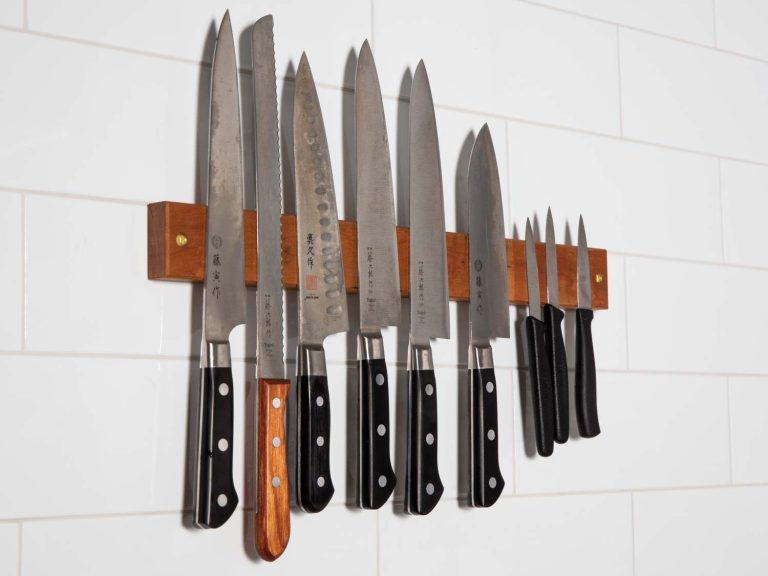Fishing Knife Vs. Kayaking Knife
The fishing knife is designed for cutting and cleaning fish, while the kayaking knife is meant for general-purpose tasks during kayaking adventures. Both knives are essential tools that serve different purposes in their respective activities.
Fishing knives have features like a sharp blade, ergonomic handle, and corrosion-resistant materials to facilitate cleaning and filleting fish. On the other hand, kayaking knives are typically multi-functional with features such as a serrated edge, a blunt tip for safety, and a sheath that can be easily accessed in case of emergencies.
Whether you’re fishing or kayaking, having the right knife can enhance your experience and ensure safety in different situations. We’ll explore the key differences between fishing knives and kayaking knives, and how to choose the right one for your needs.
1. Purpose And Importance Of Having The Right Knife For Fishing And Kayaking
Having the right knife is crucial for both fishing and kayaking. A good fishing knife needs to have a sharp and durable blade that can easily cut through various types of fishing lines and ropes. It should also have a comfortable and non-slip handle to ensure a secure grip even when wet. Additionally, a fishing knife often includes specialized features such as a serrated edge for scaling fish and a gut hook for cleaning and filleting.
Similarly, a kayaking knife should be able to handle the unique challenges of this water sport. It should have a blunt tip to prevent accidental punctures and injuries while paddling. The blade should be rust-resistant and made from a corrosion-resistant material, as kayaking involves exposure to water. The handle should be ergonomic and designed for easy attachment to a life jacket or kayak for quick access during emergencies.
Choosing the right knife for each activity is important to ensure safety and efficiency. Using a fishing knife for kayaking may result in accidents and damage to the kayak, while using a kayaking knife for fishing may not be suitable for cutting fishing lines effectively. Therefore, it is essential to have the appropriate knife for each activity to enhance the overall experience and minimize risks.
2. Features And Characteristics Of Fishing Knives
Blade Material and Design: Fishing knives are commonly made of stainless steel or high carbon steel, ensuring durability and resistance to corrosion. These blades are designed with a sharp tip for easy piercing and a serrated edge for cutting through tough materials like fishing lines. On the other hand, kayaking knives often have a blunt tip to prevent accidental punctures, and a straight edge for precise cutting.
Handle Grip and Ergonomics: Fishing knives typically feature handles made of materials like rubber or textured plastic, providing a secure grip even when wet. They may also have ergonomic designs for comfortable and controlled handling. Kayaking knives, in contrast, often have handles with a sturdy and non-slip grip to ensure a firm hold during water activities.
Specialized Functions and Accessories: Fishing knives may come with additional features such as a fish scaler, bottle opener, or blade guard. These extra functions make it convenient for anglers to tackle various tasks while out on the water. In comparison, kayaking knives are designed primarily for safety purposes and may include features like a built-in whistle, rope cutter, or blade locking system.
3. Features And Characteristics Of Kayaking Knives
Blade Material and Design: One of the key considerations when choosing a kayaking knife is its blade material and design. The blade should be made of durable and corrosion-resistant material, such as stainless steel or titanium, to withstand the harsh marine environment. A serrated edge on the blade can be useful for cutting through ropes or other tough materials, while a smooth edge is ideal for general slicing and precision tasks. The blade design should also allow for easy maneuverability and control. |
Handle Grip and Ergonomics: The handle of a kayaking knife should provide a secure and comfortable grip, even in wet or slippery conditions. Look for knives with non-slip handles made of materials like rubber or textured plastic. Ergonomic designs, with contoured shapes and finger grips, can enhance handling and reduce hand fatigue during prolonged use. |
Safety Considerations and Blade Locking Mechanisms: Safety is paramount when using any type of knife, especially in water sports like kayaking. Consider knives with reliable blade locking mechanisms to prevent accidental closures or injuries. Some popular options include liner locks, frame locks, and locking mechanisms incorporated into the handle. Additionally, ensure that the knife comes with a convenient and secure sheath or holster for safe storage and easy access during emergencies. |
4. Comparison Of Fishing Knives And Kayaking Knives
Comparison of Fishing Knives and Kayaking Knives
Fishing knives and kayaking knives both require durability and corrosion resistance to withstand the harsh outdoor conditions. When choosing a fishing knife, it is important to consider materials such as stainless steel or high carbon steel that provide excellent resistance to corrosion. Similarly, kayaking knives should be made of materials like titanium, stainless steel or rust-resistant alloys to prevent rust and damage from exposure to water.
The blade shape and edge of a knife are crucial factors to consider for both fishing and kayaking activities. Fishing knives often have a sturdy and sharp blade with a curved or pointed tip, allowing for precise cuts and easy removal of fish scales. On the other hand, kayaking knives often have a straight edge and a blunt tip for versatility and safety. They are designed for cutting ropes, freeing oneself from entanglement, or assisting in rescue situations.
Fishing and kayaking involve different safety considerations. When fishing, a knife may be used for cutting lines, dealing with hooks, or processing the catch. Thus, a fishing knife should have a secure grip, a sheath for safe storage, and a locking mechanism to prevent accidental closure. For kayaking, a knife serves as a safety tool in case someone gets trapped or entangled underwater. A kayaking knife should be easily accessible, have a bright-colored handle for visibility, and a smooth edge to prevent accidental injuries.
5. Pros And Cons Of Using A Fishing Knife For Kayaking And Vice Versa
In this blog post, we will discuss the pros and cons of using a fishing knife for kayaking and vice versa. Let’s start by looking at the advantages of using a fishing knife for kayaking.
| Advantages of Using a Fishing Knife for Kayaking |
| • Versatility: A fishing knife can be used for various tasks such as cutting lines, removing hooks, and preparing bait. • Multi-functional: Most fishing knives come with additional tools like bottle openers, screwdrivers, and can openers, which can be useful during kayaking adventures. • Durability: Fishing knives are designed to withstand harsh outdoor conditions, making them suitable for the rugged environment of kayaking. |
However, there are some drawbacks to using a fishing knife for kayaking.
| Drawbacks of Using a Fishing Knife for Kayaking |
| • Size and Weight: Fishing knives are often larger and heavier than kayaking-specific knives, which can be cumbersome and inconvenient during paddling. • Safety Concerns: Fishing knives may have sharp blades that can pose a risk of injury, especially in the confined space of a kayak. • Limited Features: Fishing knives may lack certain features specifically designed for kayaking, such as a serrated edge for cutting ropes or a blunt tip for safety. |
On the other hand, let’s explore the advantages of using a kayaking knife for fishing.
| Advantages of Using a Kayaking Knife for Fishing |
| • Compact and Lightweight: Kayaking knives are usually designed to be compact and lightweight, making them easy to carry and handle during fishing activities. • Safety Features: Many kayaking knives have features like a blunt tip, which minimizes the risk of accidental punctures or cuts while handling fish. • Specialized Design: Kayaking knives often have additional features like a serrated edge or a line cutter, which can be particularly useful for fishing tasks. |
However, there are also drawbacks to using a kayaking knife for fishing.
| Drawbacks of Using a Kayaking Knife for Fishing |
| • Limited Functionality: Kayaking knives may not offer the same level of versatility as fishing knives when it comes to tasks like cleaning fish or preparing bait. • Potential Durability Issues: Kayaking knives may not be as rugged and durable as fishing knives, which could be a concern when used in demanding fishing environments. |
6. Safety Considerations And Best Practices
Proper knife handling techniques are essential for ensuring safety during fishing and kayaking trips. When using a fishing knife or kayaking knife, it is important to prioritize safety to prevent accidents and injuries. Both types of knives should have specific safety features that are crucial for their effective use in these activities.
| Safety Features | Fishing Knife | Kayaking Knife |
|---|---|---|
| Sharpness | Ensure the knife is sharp to prevent slips and inadvertent injuries. | Same as fishing knife. |
| Blade Lock | Look for a fishing knife with a secure locking mechanism to keep the blade in place during use. | A kayaking knife should also have a blade locking system to prevent accidental folding. |
| Handle Grip | Choose a fishing knife with a non-slip grip for better control even in wet conditions. | A kayaking knife should also feature a handle with a secure grip to maintain control in water. |
Regardless of the type of knife you use, it is important to follow safety recommendations to minimize risks. Keep the knife properly sheathed when not in use, and avoid waving it around. Ensure you have a good grip on the knife when cutting or handling it. Never leave a knife unattended, especially when in a kayak or boat. By prioritizing safety and using proper handling techniques, you can enjoy fishing and kayaking adventures while minimizing the risk of accidents.
7. Choosing The Right Knife For Fishing And Kayaking
Fishing Knife Vs. Kayaking Knife
Factors to Consider
When selecting a knife for fishing and kayaking activities, there are several important factors to consider. One of the primary considerations is your budget. It’s crucial to choose a knife that fits within your budget constraints, as there are a variety of options available at different price points. Additionally, it’s essential to select a knife that meets your specific needs. For fishing, you may require a knife with features like a serrated edge or a line cutter to assist with tasks such as filleting fish or cutting lines. Similarly, for kayaking, you might need a knife that is corrosion-resistant and easy to handle in wet conditions.
Recommendations for Popular Fishing and Kayaking Knife Options
There are several popular options to consider when choosing a fishing or kayaking knife. Brands such as XYZ and ABC offer a range of high-quality knives suitable for these activities. The XYZ model, with its durable stainless steel blade and ergonomic handle, is an excellent choice for fishing enthusiasts. On the other hand, the ABC knife, known for its corrosion-resistant properties and lightweight design, is ideal for kayaking adventures. Remember to consider your specific requirements and consult customer reviews to ensure the knife you choose is reliable and efficient. By carefully considering your budget and the features you need, you can select the perfect knife for your fishing or kayaking endeavors.

Credit: www.reddit.com
8. Maintenance And Care Of Fishing And Kayaking Knives
Maintenance and Care of Fishing and Kayaking Knives Properly cleaning and drying your fishing and kayaking knives is essential to maintain their functionality and longevity. After each use, ensure that you remove any dirt, debris, or residue from the blades and handles. Use a mild soap or detergent and warm water to gently clean the knife. Avoid using abrasive materials or harsh chemicals that could damage the blade’s finish or handle material. Once clean, thoroughly dry the knife to prevent corrosion. Wipe it down with a soft cloth and consider using compressed air or a hairdryer on a low setting to remove any moisture from hard-to-reach areas. Sharpening and honing the knife’s edge regularly is also crucial for optimal performance. Use a sharpening stone or a honing rod to maintain a sharp edge. Follow the manufacturer’s instructions or seek professional guidance if you’re unsure about the sharpening process. When it comes to storage, it is recommended to keep your fishing and kayaking knives in a dry and secure location. Consider using a knife sheath, blade protector, or a knife block to prevent accidental damage and ensure the blades remain sharp. |
Conclusion
Both fishing knives and kayaking knives have their own unique advantages and purposes. While fishing knives are designed specifically for cutting and preparing fish, kayaking knives are more versatile and serve multiple purposes, such as cutting ropes, removing debris, and even self-defense.
The choice between the two ultimately depends on your specific needs and activities. If you primarily engage in fishing and want a knife tailored for that purpose, a fishing knife would be your best bet. On the other hand, if you enjoy kayaking and want a multi-functional tool that can handle various situations, a kayaking knife would be the more suitable option.
It is important to consider factors like durability, grip, and blade material when choosing either knife. By understanding the intended uses and features of each knife, you can make an informed decision that will enhance your outdoor experiences.






